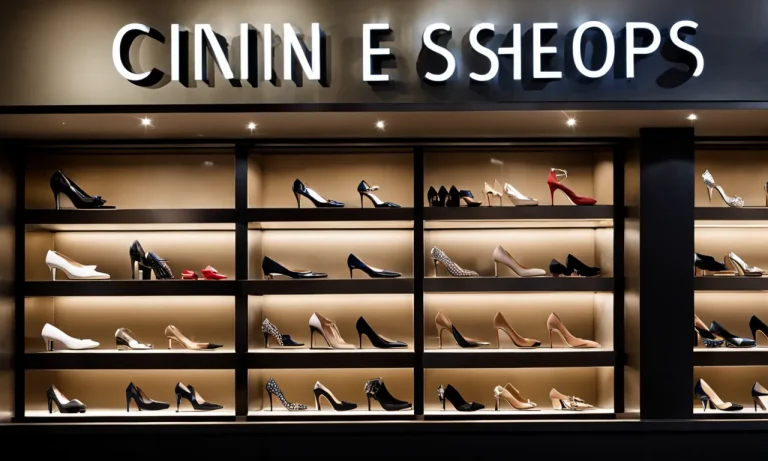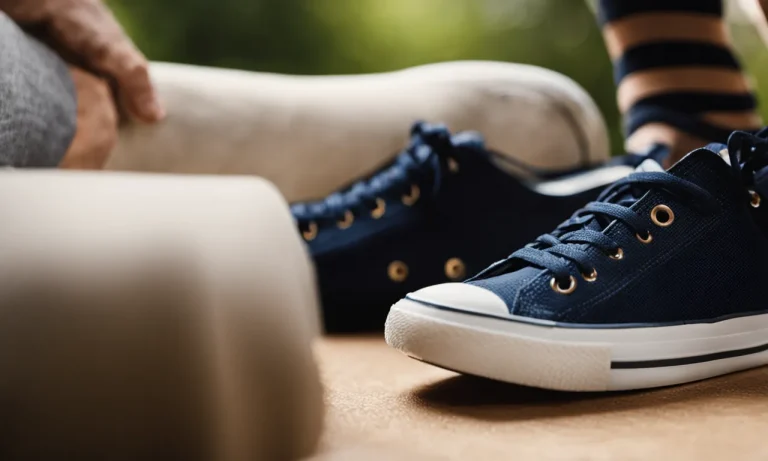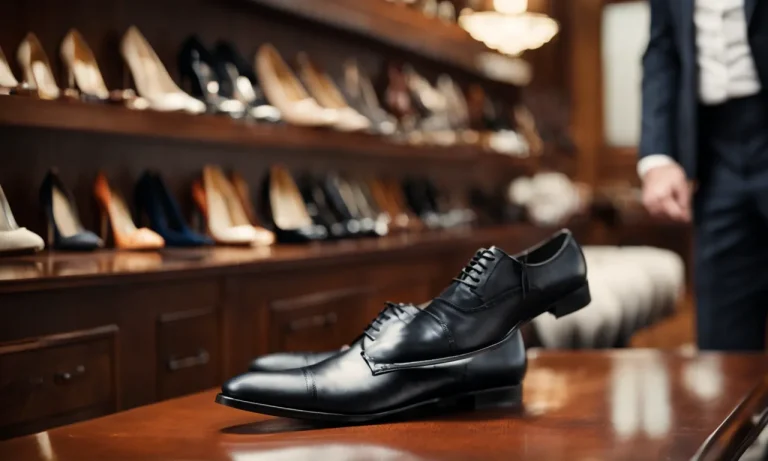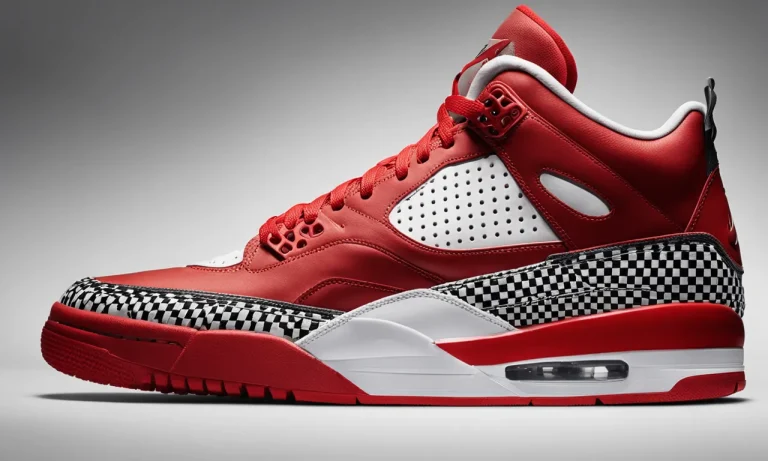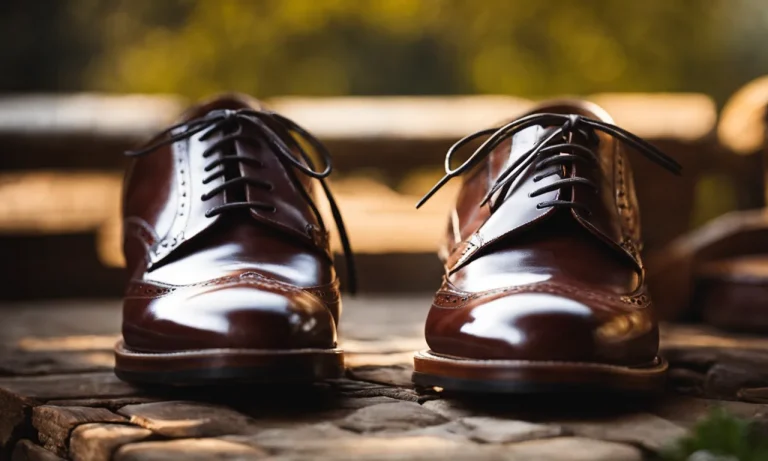Running is one of the most popular and accessible forms of exercise. With minimal equipment required, it’s easy to lace up your running shoes and hit the road, trail or treadmill. But having the right running shoe can make all the difference in comfort, performance and injury prevention.
If you’re short on time, here’s a quick answer: Look for running shoes with proper arch support, cushioning, flexibility, lightweight/breathability and durability from reputable athletic brands like Nike, Adidas or Brooks.
In this comprehensive guide, we’ll go over everything you need to know to find the perfect pair of running shoes.
Arch Support
When it comes to choosing a good running shoe, arch support plays a crucial role in providing comfort and preventing injuries. The arch is the curved part of the foot that helps distribute body weight and absorb shock while running.
There are several factors to consider when determining the right level of arch support for your feet.
High arches vs low arches
Understanding your arch type is essential in selecting the right running shoe. People with high arches have a more pronounced curve in their feet, which can lead to excessive pressure on the outer edges of the foot.
On the other hand, individuals with low arches, also known as flat feet, have less natural arch support and may experience overpronation, where the foot rolls inward excessively. It is important to choose a running shoe that caters to your specific arch type to provide the necessary support and stability.
Motion control vs stability vs neutral
Running shoes are categorized into three main types based on their level of support: motion control, stability, and neutral. Motion control shoes are designed for individuals with low arches and overpronation. They feature extra support and structure to control excessive inward rolling of the foot.
Stability shoes are suitable for runners with normal arches and mild overpronation, providing a balance of cushioning and support. Neutral shoes, on the other hand, cater to runners with high arches or those who exhibit underpronation (supination), where the foot rolls outward.
These shoes provide cushioning and flexibility without excessive support.
Orthotics
In some cases, individuals may require additional support beyond what a regular running shoe can provide. This is where orthotics come into play. Orthotics are custom-made shoe inserts that are designed to address specific foot conditions, such as high arches, flat feet, or other biomechanical issues.
They can help correct imbalances, improve alignment, and provide extra cushioning and support. If you have specific concerns about your arches or foot mechanics, it is advisable to consult with a podiatrist or a trained professional who can assess your needs and recommend appropriate orthotics.
Remember, finding the right arch support is crucial in ensuring a comfortable and injury-free running experience. Don’t hesitate to try on different types of running shoes and seek professional guidance if needed. Your feet will thank you for it!
Cushioning
When it comes to choosing a good running shoe, cushioning is a crucial factor to consider. The right amount of cushioning can provide comfort, support, and impact absorption, reducing the risk of injuries and enhancing the overall running experience.
There are a few key aspects of cushioning to look for when selecting a running shoe.
Midsole foam
The midsole foam is one of the primary components responsible for cushioning in a running shoe. It is located between the outsole and the upper part of the shoe. The type of foam used can vary among different brands and models.
Some popular options include EVA foam, polyurethane foam, and proprietary foam technologies.
EVA foam, short for ethylene-vinyl acetate, is a common material used in midsoles. It offers a good balance between cushioning and responsiveness, making it suitable for most runners. Polyurethane foam, on the other hand, provides enhanced durability and support, but it can be heavier than EVA foam.
Some brands also develop their own foam technologies, such as Nike’s React foam or Adidas’s Boost, which aim to provide unique cushioning properties.
Heel to toe drop
The heel to toe drop, also known as the offset or the differential, refers to the difference in height between the heel and the forefoot of a shoe. It affects the positioning of the foot during the running stride and can influence the distribution of impact forces.
Running shoes typically have a heel to toe drop ranging from 0mm to 12mm.
A lower heel to toe drop, such as 0mm to 4mm, promotes a more natural running form and encourages a midfoot or forefoot strike. This can be beneficial for runners who prefer a minimalist style or those looking to improve their running technique.
A higher heel to toe drop, such as 8mm to 12mm, provides more cushioning and may be suitable for runners who land on their heels or require additional support.
Cushioning for road vs trail running
The cushioning needs of road runners and trail runners can differ due to the varying terrains they encounter. Road running shoes typically prioritize cushioning and shock absorption to provide a smooth ride on hard, flat surfaces.
The cushioning in these shoes is designed to absorb impact forces generated from repetitive foot strikes on concrete or asphalt.
On the other hand, trail running shoes require more versatile cushioning to handle uneven terrain, rocks, roots, and other obstacles. They often feature additional cushioning in the form of rock plates or protective overlays to shield the feet from sharp objects.
The cushioning in trail running shoes is also designed to provide stability and support on unpredictable surfaces.
It is important to consider your running preferences and the type of terrain you will be running on when choosing the right cushioning for your running shoe. Experimenting with different levels of cushioning and seeking advice from experts or experienced runners can help you find the perfect balance for your needs.
Flexibility
Flexibility is an important factor to consider when looking for a good running shoe. A flexible shoe allows for a more natural range of motion, reducing the risk of injuries and promoting better performance.
There are two main aspects to consider when assessing the flexibility of a running shoe: the outsole and torsional rigidity.
Outsole
The outsole of a running shoe plays a crucial role in determining its flexibility. It is the part of the shoe that comes into direct contact with the ground. A good running shoe should have an outsole that is both durable and flexible.
Look for a shoe with a rubber outsole that provides good traction and allows for a smooth and fluid transition from heel to toe. The flexibility of the outsole is essential for adapting to different surfaces and terrain, allowing you to maintain stability and control during your runs.
Torsional Rigidity
Torsional rigidity refers to the shoe’s ability to resist twisting along its longitudinal axis. A good running shoe should provide a balance between flexibility and torsional rigidity. Too much flexibility can lead to instability, while too much rigidity can restrict natural foot movement.
Look for a shoe that offers a moderate level of torsional rigidity, allowing for a smooth and efficient stride.
When assessing the flexibility of a running shoe, it is important to consider your individual needs and preferences. Some runners may prefer a more flexible shoe for a minimalist running experience, while others may require more support and stability.
It is always recommended to try on different shoes and consult with a knowledgeable salesperson or a podiatrist to find the right level of flexibility that suits your running style and foot biomechanics.
For more information on running shoe flexibility and other related topics, you can visit websites like Runners World or Verywell Fit, which provide valuable insights and expert advice on running footwear.
Weight
When it comes to running shoes, weight plays a crucial role in determining performance. A lighter shoe can make a significant difference in how fast and efficiently a runner can move. Lightweight running shoes are designed to minimize the strain on the legs and feet, allowing for a quicker and more effortless stride.
They are especially beneficial for long-distance runners who need to conserve energy throughout their runs.
Lightweight important for performance
The importance of lightweight shoes for performance cannot be overstated. By reducing the weight of the shoe, runners can experience improved agility and speed. Lighter shoes allow the feet to move more freely, enabling runners to maintain a faster pace and transition between strides more smoothly.
Additionally, a lighter shoe can help prevent fatigue, as the legs and feet are not burdened by unnecessary weight. Many professional athletes and runners prioritize lightweight shoes to gain a competitive edge in races.
Breathable mesh for ventilation
In addition to being lightweight, a good running shoe should also provide adequate ventilation to keep the feet cool and dry during workouts. This is where the use of breathable mesh material comes into play.
Breathable mesh allows for air circulation, preventing excessive sweating and reducing the risk of blisters and discomfort. The mesh material allows heat and moisture to escape, keeping the feet comfortable and preventing the buildup of odors.
It is worth noting that shoes with poor ventilation can lead to discomfort and even foot problems, making it essential to choose a shoe with breathable features.
For more information on running shoe features, you can visit Runners World or Verywell Fit.
Durability
When it comes to running shoes, durability is an essential factor to consider. A good running shoe should be able to withstand the impact and stress of repetitive foot strikes. Here are two key aspects to look for when assessing the durability of a running shoe: outsole material and construction quality.
Outsole Material
The outsole of a running shoe is the part that comes into direct contact with the ground. It plays a crucial role in providing traction and protecting the shoe from wear and tear. The choice of outsole material can greatly affect the durability of a running shoe.
High-quality running shoes often feature outsoles made of durable rubber compounds. These materials are known for their excellent grip and resilience, making them ideal for withstanding the rigors of regular running.
Some common outsole materials include carbon rubber, blown rubber, and Continental rubber.
Carbon rubber is a popular choice for running shoes due to its outstanding durability. It is highly resistant to abrasion and offers excellent traction on various surfaces. Blown rubber, on the other hand, is lightweight and provides a softer and more cushioned feel.
Continental rubber is known for its exceptional grip, especially in wet or slippery conditions.
By choosing a running shoe with a durable outsole material, you can ensure that your shoes will last longer and provide you with a reliable grip throughout your runs.
Construction Quality
In addition to the outsole material, the overall construction quality of a running shoe is also a crucial factor in determining its durability. A well-constructed shoe will have strong seams, reinforced stitching, and durable materials throughout.
When examining the construction quality of a running shoe, pay attention to details such as the stitching on the upper, the reinforcement in high-stress areas, and the overall integrity of the shoe’s design.
Look for double or triple stitching, as well as overlays or reinforcements in areas prone to wear and tear, such as the toe box or the heel counter.
It’s also worth considering the type of construction used in the shoe. Some common construction methods include stitched, glued, or combination methods. Each has its advantages, and it’s essential to choose a shoe that matches your specific needs and preferences.
A great website to learn more about running shoe construction and durability is Runner’s World. They provide in-depth reviews and expert advice on various running shoe models, helping you make an informed decision based on reliable information.
Remember, investing in a durable running shoe will not only save you money in the long run but also provide you with the support and protection you need during your runs.
Brand
When it comes to choosing a good running shoe, the brand is an important factor to consider. Well-known athletic brands have built a reputation for producing high-quality and durable running shoes. These brands have invested years of research and development to create shoes that are specifically designed to enhance performance and provide the necessary support and cushioning for runners.
Well-known athletic brands
There are several well-known athletic brands that are highly regarded in the running community. Brands like Nike, Adidas, New Balance, and Brooks have consistently delivered top-notch running shoes that cater to different types of runners.
These brands have a wide range of models to choose from, each designed to meet the specific needs of different runners, whether it be for long-distance running, trail running, or sprinting.
When selecting a running shoe, it’s important to consider the reputation and track record of the brand. Look for brands that have a history of producing high-quality and reliable running shoes. Reading customer reviews and seeking recommendations from experienced runners can also help in determining which brands are trusted and recommended.
Get fitted at specialty running stores
While the brand is important, it’s equally crucial to get properly fitted for a running shoe. This is where specialty running stores come in. These stores have knowledgeable staff who can assess your running gait, foot type, and specific needs to recommend the right shoe for you.
At specialty running stores, you can expect to find a wide selection of running shoe brands to choose from. The staff will take the time to measure your feet, discuss your running goals, and analyze your running stride.
Based on this information, they can recommend several shoe options that will provide the best fit and support for your feet.
Getting fitted at a specialty running store ensures that you are getting a shoe that is tailored to your individual needs. This personalized approach can help prevent common running injuries, such as shin splints or plantar fasciitis, and optimize your running performance.
It’s important to note that while specialty running stores may carry a variety of brands, they may not have every single model or style available. If you have a specific brand or shoe in mind, it’s a good idea to call ahead and check if they carry it.
Remember, finding the right running shoe is a personal journey. Consider the reputation of the brand, but always prioritize getting properly fitted at a specialty running store to ensure the best fit and support for your feet.
Conclusion
Finding the right running shoe involves considering factors like arch support, cushioning, weight and durability. Test out different brands and styles at your local running store to find the best fit for your foot type and running needs.
With the proper shoe, you’ll be comfortable hitting the road and optimizing your performance.

